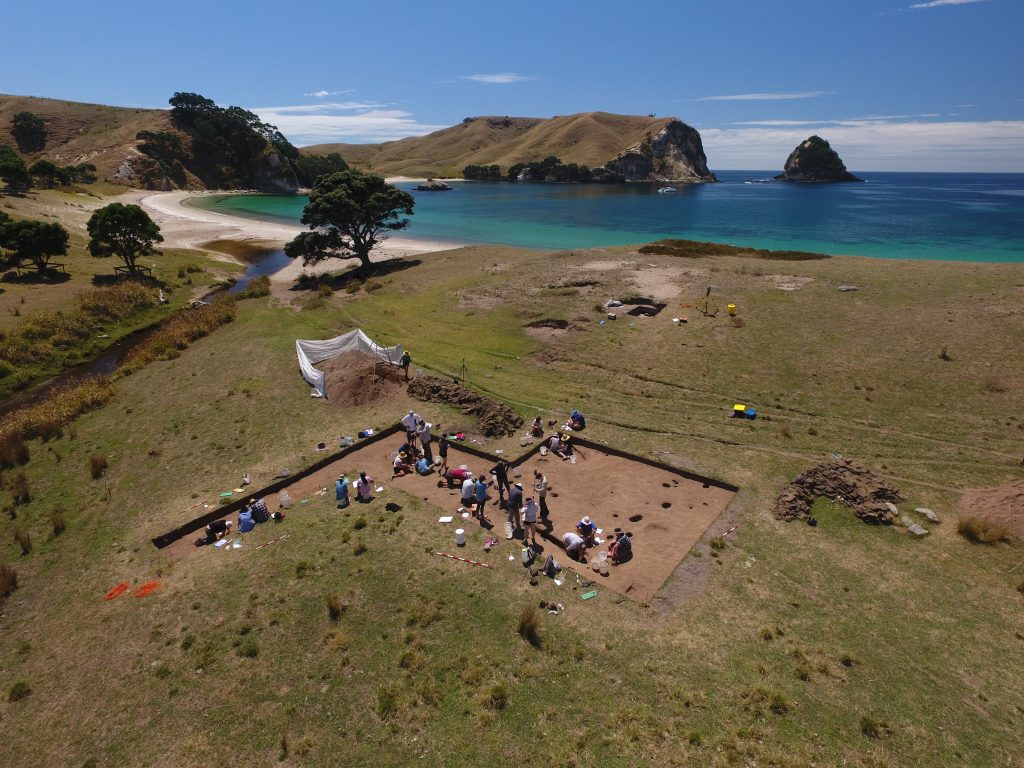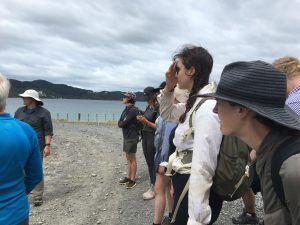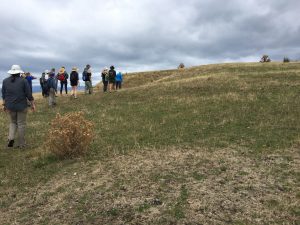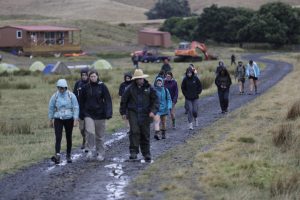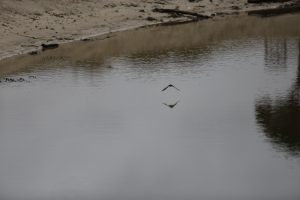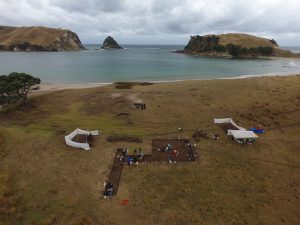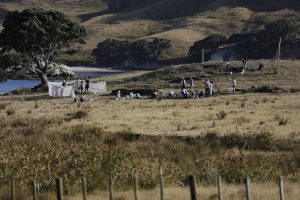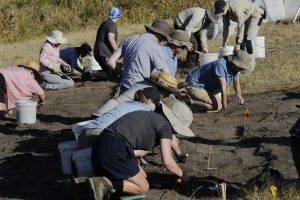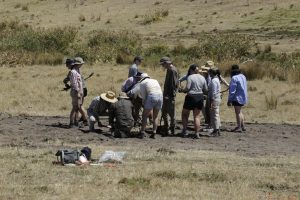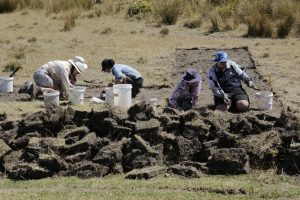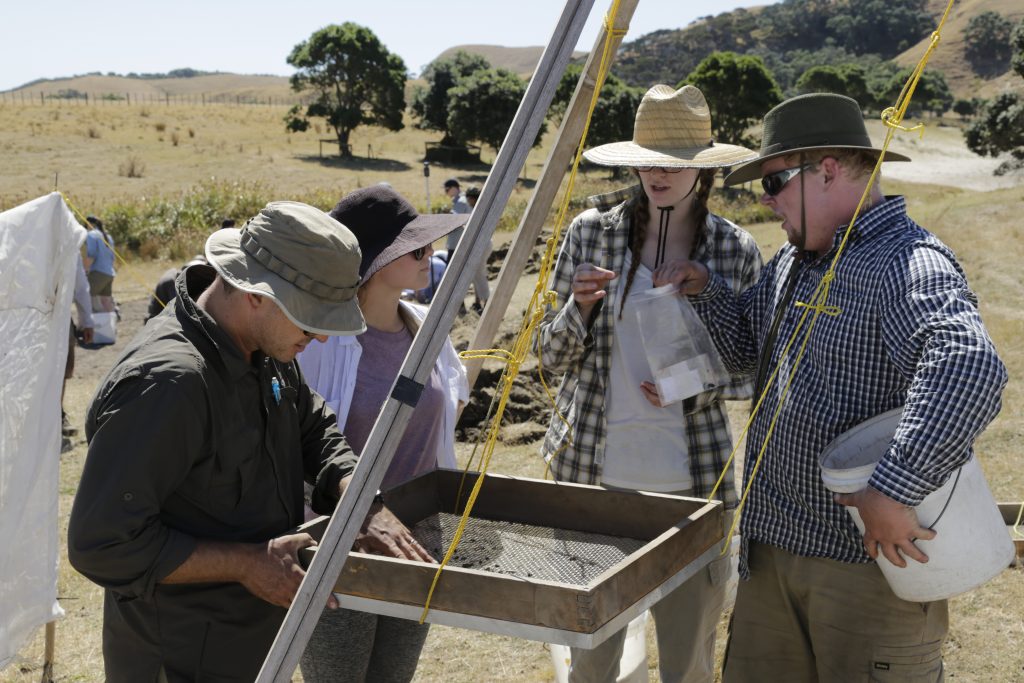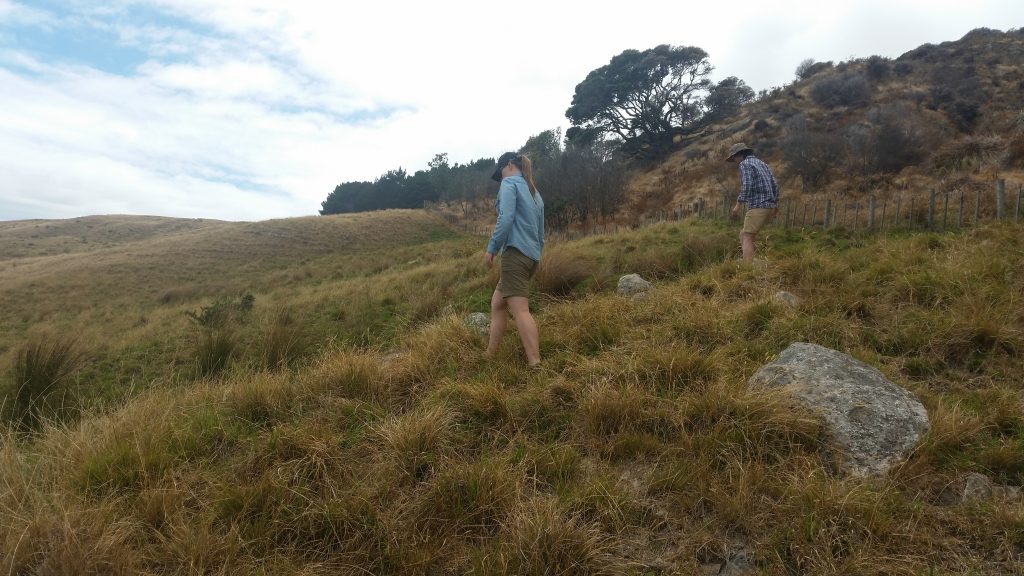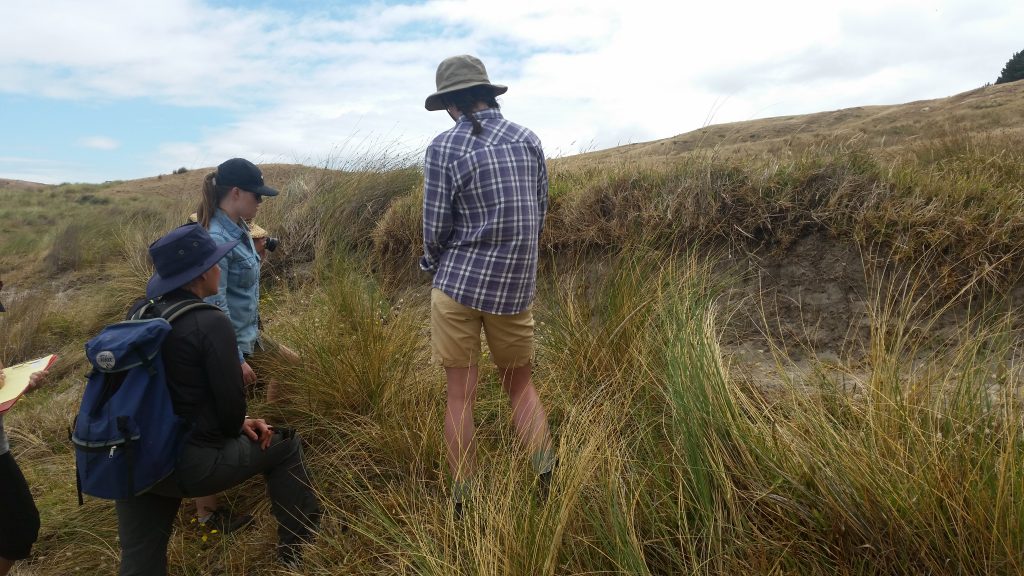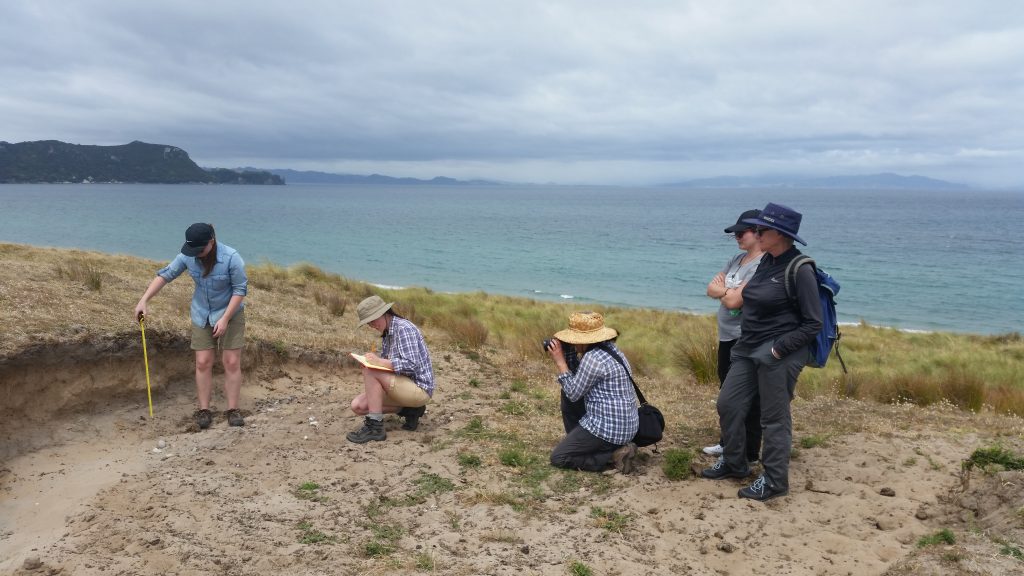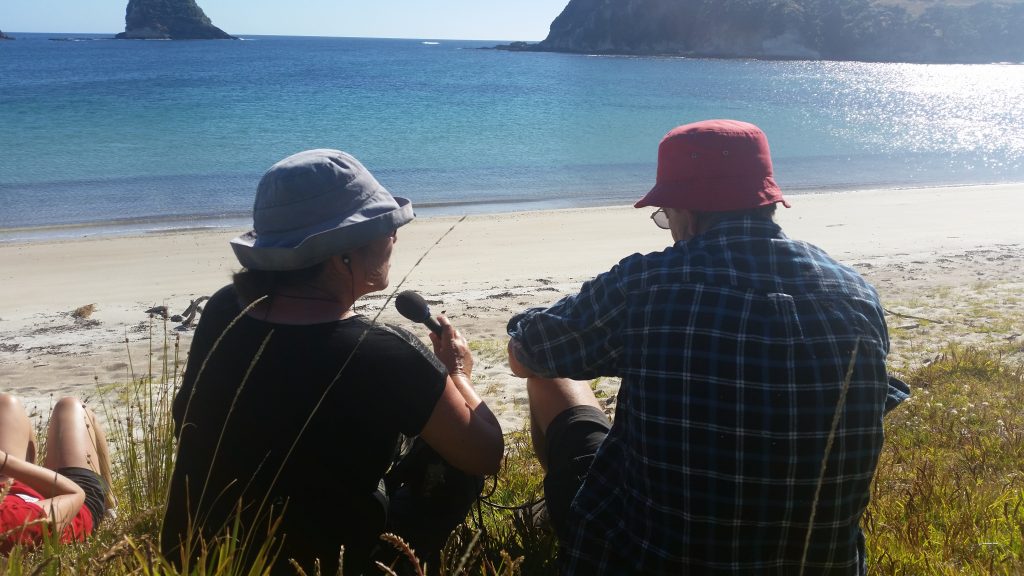Kia Ora Whanau, friends and all other forms of being. I am about to take you on a journey of my experience so far on our archaeological adventure on Ahuahu island.
Today we finished our final day of excavations on this stunning island and let me tell you, we kicked it up so many gears you’d think we were in a fast and furious movie. Dirt flew through the air as we worked to reveal as many secrets as possible before we leave to rejoin society.
Many many postholes littered the base of our trench before we started today and by the end it was covered in them. We continued to excavate a peculiar linear feature that cut into the underlying dune. It seemingly runs from the SW corner of the site all the way to the northern face and looks to continue through the baulk. It is quite puzzling as to its purpose, theories continue to be thrown around, everything from a drain, a palisade and a tiny water race for tiny horses (my own theory). Whatever it turns out to be it would have been an impressive structure to behold and a rather unique one at that too.
The more I look at this island and the more the directors open my eyes to what I am seeing, the more awe-filled I become, thinking of what this island looked like during its prime. The landscape is completely unique and is even more special given the occupation that took place on this land as well.
I have been lucky enough to find a number of unique artefacts such as drill points, adze flakes, a charred shark tooth and (my favourite) a beach pebble with a pattern etched into the stone. I feel honoured to be able to uncover anything, let alone artefacts as special as these.
I have throughly enjoyed my time on this island and have created many memories that I will cherish till the day I die.
This trip has been my first proper taste of archeology, it has opened my eyes up to the wonders (and horrors) of archaeology all of which have strengthened my resolve to one day make this job my career.
I would like to thank all the staff and people who made this possible. I think I can say on the behalf of everyone that we are all grateful for your late hours an tireless work, thank you once again and I hope we haven’t been too much a pain to deal with.
Nga Mihi Katoa
Darcy


